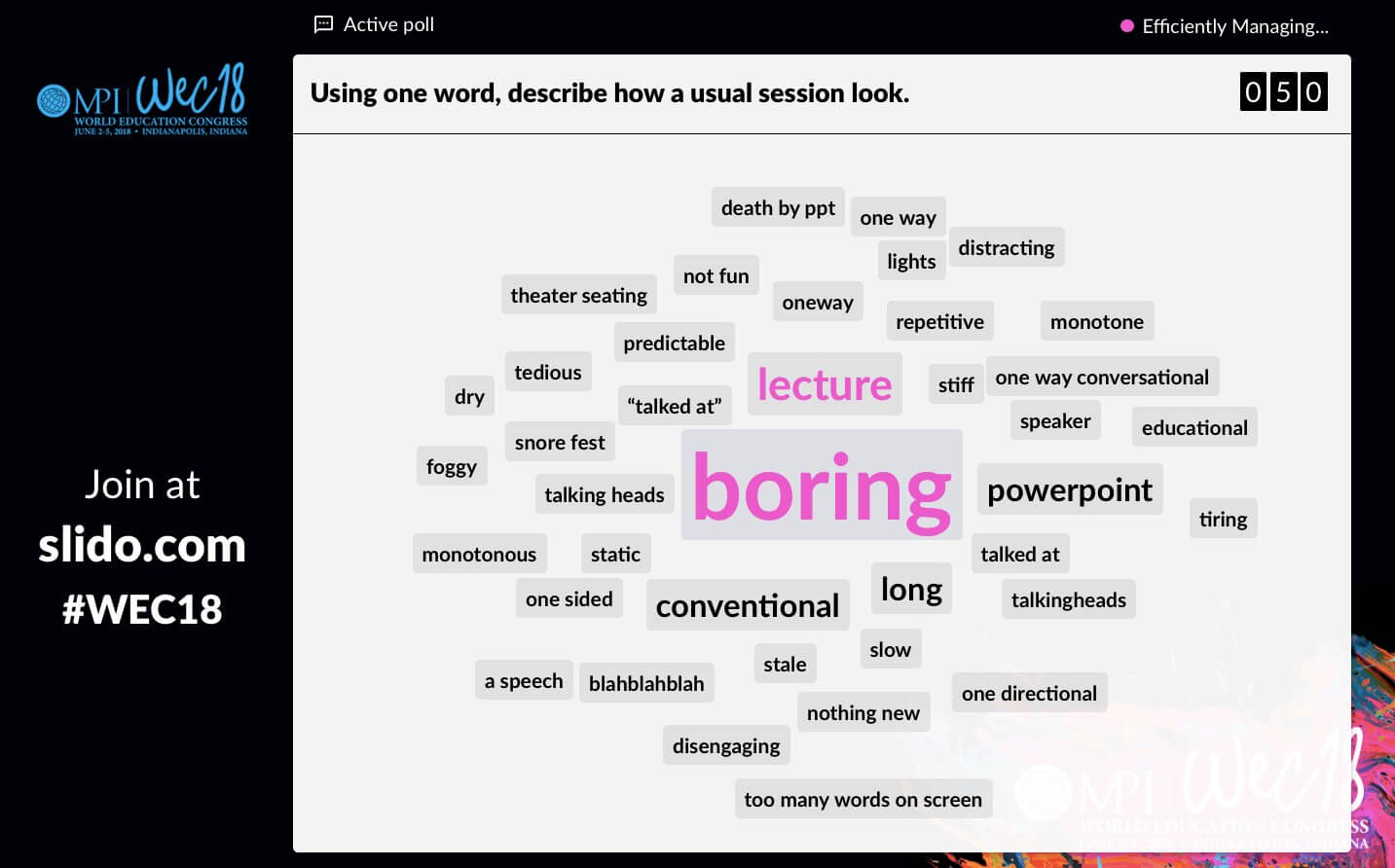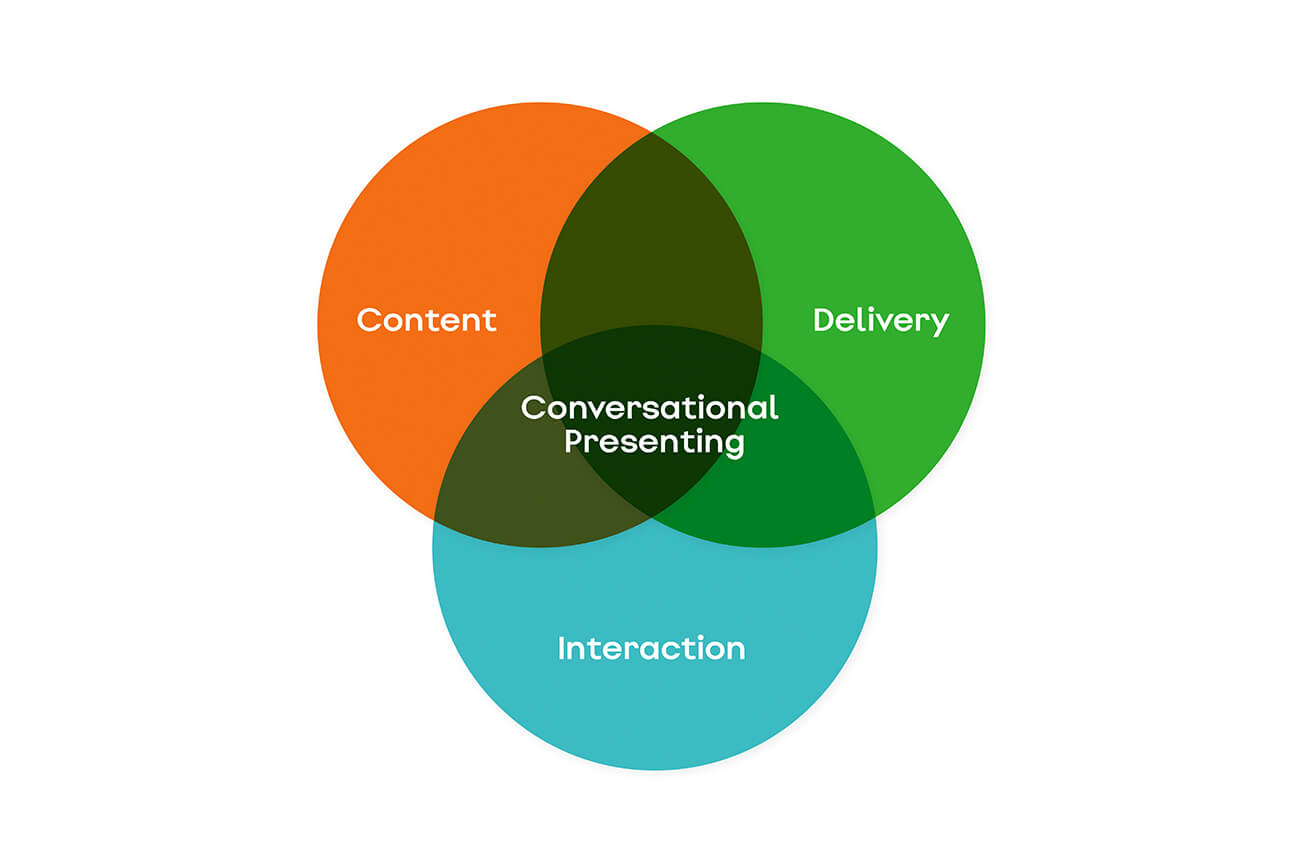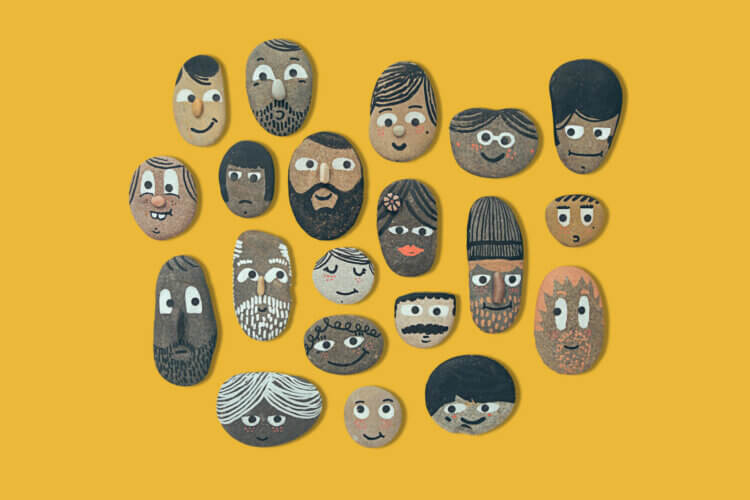Presentations are far from being dead.
With 30 million PowerPoint presentations delivered every single day, they’re doing better than ever.
But the fact is that many of these presentations are broken. They just don’t work.
Many blame it on “Death by PowerPoint”, but it’s not about the tool.
It’s about the way we deliver information.
We are stuck in a century-old, passive style of one-way information broadcast. And that format simply doesn’t comply with the 21st century.
The numbers speak for themselves: According to Prezi’s recent research, only 4% of people said that they find linear, one-way presentations engaging and memorable.
Alarming number. Yet, presenters around the world still follow the status quo because there seem to be no immediate consequences for not changing it.
But what about the $37 billion wasted yearly on ineffective meetings, largely due to ineffective presentations? Or, the 58% of content forgotten, in just 20 minutes into the presentation?
The stats have it that poor presentations do translate into real consequences.
Now let’s take a look at how to fix them.
What is Conversational Presenting?
Here comes the only definition in this article.
Conversational presenting is about delivering a presentation that gives your audience multiple opportunities for structured interaction.
This is what it means in reality.
Let’s think about a traditional presentation for a moment. What words come to your mind?
We asked this question to people during dozens of our presentations.
And this is what we got. Each time.

Then we asked our audience what word comes to their minds when they think of an impactful presentation?
The responses flowed in and this was the result:

Conversational presenting is ultimately about making your presentations everything that’s on the second word cloud.
Interactive, engaging, fun. But above all, impactful.
How is Conversational Presenting different?
At its core, Conversational Presenting does not differ much from a presentation format that you know – you still deliver your content.
But unlike traditional presentations, Conversational Presenting brings another element into the equation: Interaction.

Adding interactive activities and facilitation techniques into your flow will help you break the one-way content stream into bite-size pieces.
In practice, it’s about creating a short break for structured interaction after each chunk of content and allowing your participants to think about and respond to your talk.
There are various tech-based and non-tech-based interactive activities and facilitation techniques you can leverage, but more on that later.
Let’s take a closer look at how conversational presentation differs from a traditional presentation format.
Traditional presentation
- Speaker talks one-way with minimal breaks
- Participants are locked in to listen passively
- Speaker questions are rhetorical and don’t invite participation
- When participants’ attention shifts, it is rarely regained
- Participant-to-participant discussions are not created
Conversational presentation
- Speaker talks with frequent breaks to receive feedback from the audience
- Participants are encouraged to participate and share their views
- Speaker questions are responded to by show of hands or voting on live polls
- As attention drops, the speaker uses an interactive activity to regain it
- Speaker creates a space for people to have a discussion
Who is Conversational Presenting for?
You can make use of Conversational Presenting in various different situations.
You may be an educator, looking to maintain your students’ attention. Or, you may be a professional speaker, whose goal is to connect with your audience and make your speech more powerful.
Let’s break down the four main use cases and see to what end you can leverage Conversational Presenting strategies.
1. Company meetings & Team meetings
If you’re a manager or a leader who runs meetings on a regular basis, you’ve surely contemplated ways to make sure your gatherings don’t make the infamous stats of ineffective meetings. See what Conversational Presenting can do for you:
- Increase meeting efficiency
- Make sure the team get the message
- Communicate more transparently with the team
- Give a safe space for your team to give feedback
- Re-engage the team during a lengthy meeting
Conversational Presenting in real life:
During Slido’s monthly all-hands meetings, our CEO, Peter Komornik, likes to re-engage our teammates by sparking discussions in the room. For example, he asks our colleagues to turn to their partner and discuss the biggest highlights of the last month. He then encourages us to submit our highlights into Slido to see what others have picked. He often asks several people in the audience to share the reason why this particular thing means a lot to them.
2. Conferences
You may only have a few speaking gigs spaced out during the year, but why not make the most of the opportunity and give a speech that your audience will remember. Employ Conversational Presenting methods to:
- Make your presentations stand out
- Engage your audience
- Open conversations with your attendees
- Bring an entertaining element to your talks
Conversational Presenting in real life:
Mark Cooper, CEO of IACC, used a series of five live polls to make the delivery of the report on ‘Meeting Room of the Future’ more engaging. He spaced out polls every 10 minutes to hear audience feedback on the findings and to look at where the industry is going. Midway through, he also created a roundtable discussion on the topic ‘What do you think a venue focused on meetings will look like in 5 years?’, to get people to connect and share ideas.
3. Lectures & classes
If you’re in the EDU sector, you probably know best how hard it is to make every presentation interesting and inspiring. Conversational Presenting can arm you with a toolkit to:
- Maintain your students’ attention
- Maximize the learning during your class
- Check for student understanding
- Create a safe space for discussions
- Receive your students’ instant feedback
- Add some fun into your classes
Conversational Presenting in real life:
Brian McFee, Assistant Professor at NYU, uses Slido to run a problem-solving exercise every 10-15 minutes of his lecture. First, he lets each student work on it individually and submit the answers into Slido. Then, he poses the same question, but this time, he asks students to work on the problem in pairs. Seeing the real-time answers from students allows him to see if students understand the content he’s presenting, and uncover any weak spots.
Related read: Free Ebook: How to Improve Conversation in Your Classroom
4. Training sessions & workshops
Being a trainer, you’ve probably never stopped looking for ideas to make your training as valuable as possible for your participants. Conversational Presenting can offer you a helping hand there to:
- Make your training more participatory
- Maximize the value of the time spent together
- Encourage people to take learning into their own hands
- Create space for people to put theory into practice
Conversational Presenting in real life:
During the 2-day leadership workshop, Lukas Bakos, managing director at Maxman Consultants, split the group into pairs and ask everyone to write their TOP 10 on a certain topic for each round (topics ranged from the 10 most visited sites according to Lonely Planet, to the 10 best-selling cars in history). He spaced out the rounds after breaks throughout the day, so the group had an incentive to get back to the room on time.
How do you give a Conversational Presentation?
Now, to the fun part. How do you actually make your next presentation engaging and conversational?
Don’t worry, it’s not rocket science. With the right toolkit and some skill in facilitation, you can start giving presentations that your audience will love as quick as lightning.
Learn the basics of Conversational Presenting in the article below.




